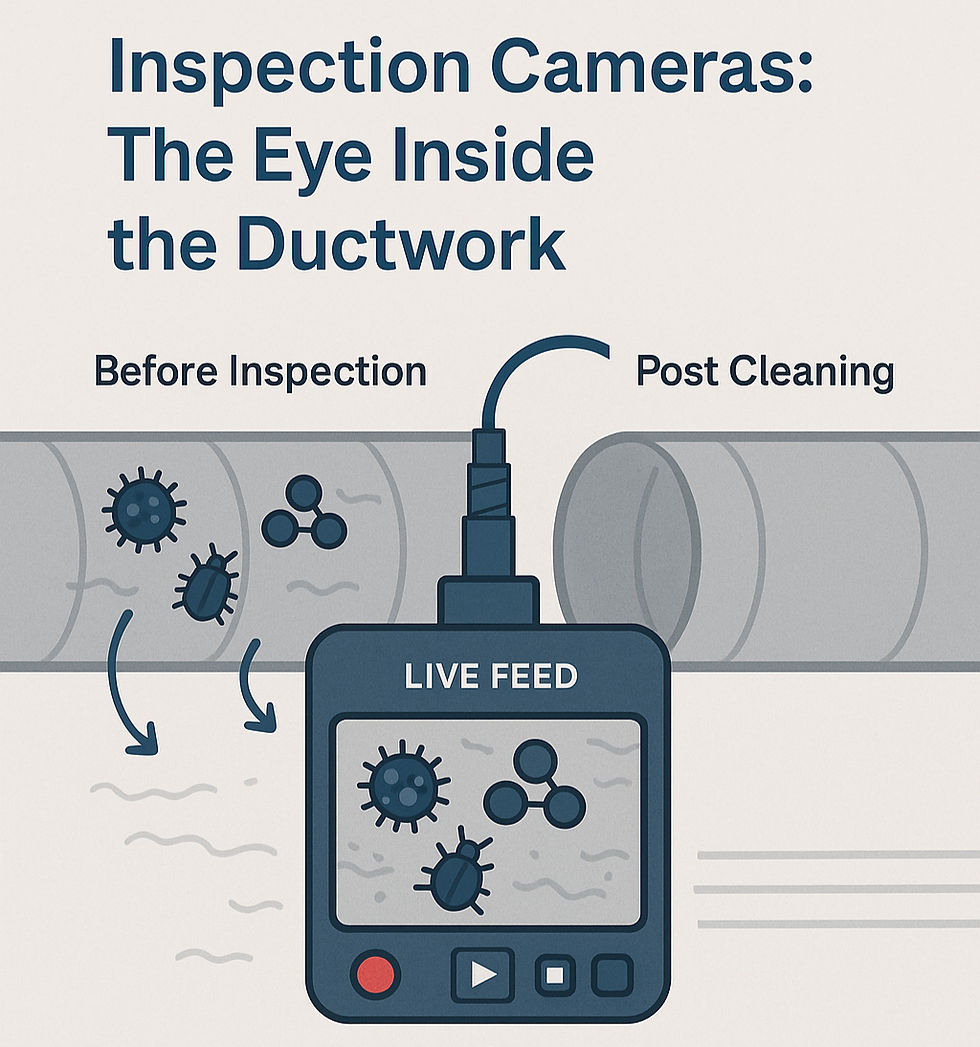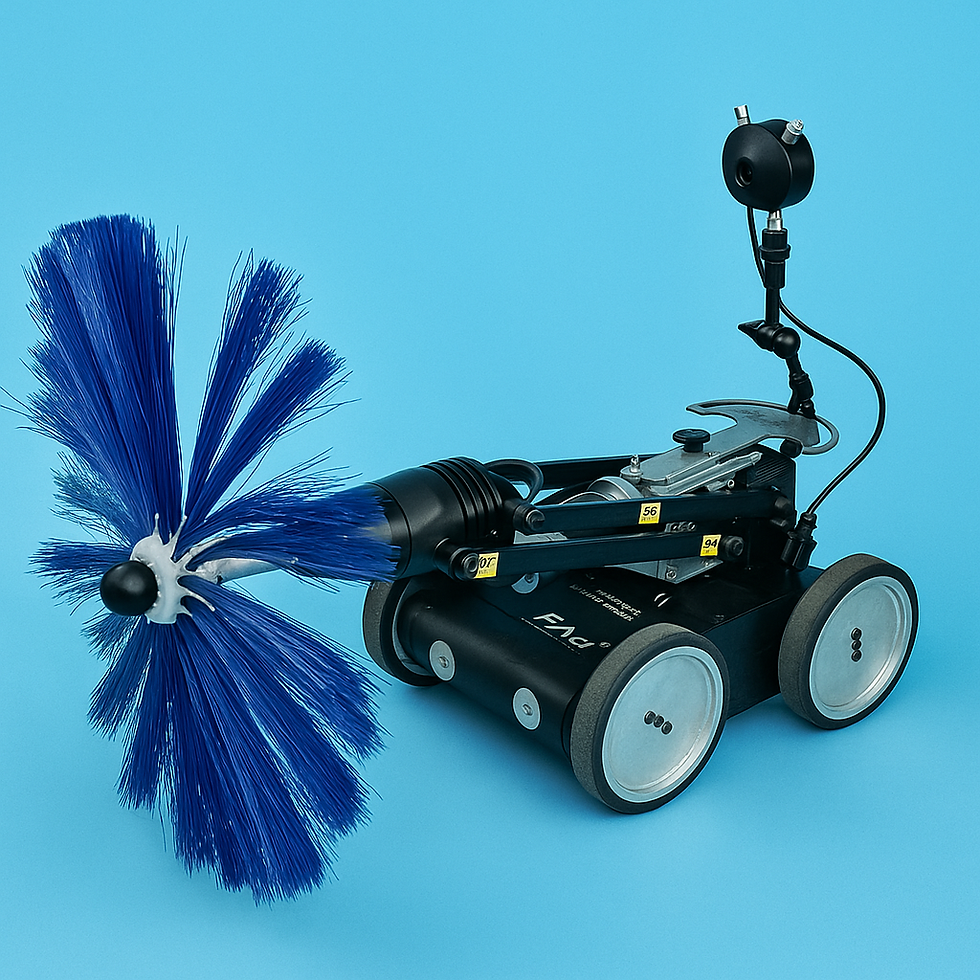Maximizing ROI with Strategic Upgrades in Duct Cleaning Technologies
- MadVac

- Jun 23
- 4 min read
Upgrading your duct cleaning technology might feel overwhelming due to the costs involved. However, investing in tools like advanced camera systems, robotics, and agitation tools can greatly improve your service quality and profitability. In fact, businesses that embrace these technologies report efficiency increases of up to 40%. In this guide, we’ll explore how and when to make these investments, aid in scaling your services effectively, and provide insights on justifying premium purchases.
The Importance of Duct Cleaning Technology
Duct cleaning is essential for ensuring indoor air quality and system efficiency, which can be vital for the health of occupants. Traditional methods may miss areas, leading to incomplete cleanings and dissatisfied customers. Upgrading your technology not only improves your cleaning quality but also sets your business apart from the competition.
For instance, businesses that utilize modern tools report a 25% increase in customer satisfaction rates. Adopting technologies like camera systems and robotic cleaners can transform the labor-intensive cleaning process into a more efficient and thorough service, keeping your business competitive in this ever-evolving industry.
When to Consider Advanced Camera Systems
Camera systems have become a key part of professional duct cleaning, allowing for in-depth inspections of ductwork. These systems provide essential visual confirmation of cleanliness.
Identifying Problems
With camera systems, you can detect hidden issues such as mold growth or blockages that are not visible without extensive manual inspection. This capability boosts your service quality and enables you to propose preventative measures to clients. For example, identifying a 90% blockage can prompt immediate action, improving the home’s air quality.
Justifying the Investment
While the upfront cost for camera systems may exceed traditional inspection methods, consider their long-term advantages. Improving customer satisfaction tends to lead to increased repeat business, which can increase your revenue by 30% over time. Furthermore, the ability to present visual findings can justify service fees that are 15-20% higher than before.

The Rise of Robotics in Duct Cleaning
Robotic systems bring efficiency to the labor-intensive duct cleaning process. These machines can navigate through ductwork, offering a thorough cleaning that minimizes human error.
Enhancing Efficiency
Robotics enable you to complete jobs more quickly while reducing labor costs. In fact, companies using robotic systems report a 35% decrease in job time. This advantage is particularly important for commercial clients where downtime can lead to lost revenue. Adopting robotics can transform your business operations and enable you to comfortably manage larger contracts without compromising quality.
ROI Through Scalability
With robotic cleaners, you can scale your services in response to increasing demand without needing to hire more staff. For example, if demand rises by 50%, you can meet it without a proportional increase in costs, maximizing your return on investment.

Advanced Agitation Tools: The Final Touch
Agitation tools play an important role in removing dirt and debris from duct surfaces. Traditional agitation methods may not reach all areas, but advanced tools provide a significant advantage.
Improving Cleanliness
Using advanced agitation techniques leads to better dirt removal, resulting in improved indoor air quality for your clients. For instance, companies that adopt these tools see an average 50% increase in dirt removal effectiveness. This demonstrates a commitment to quality service and enhances your reputation in the market.
Cost-Effectiveness
Although the initial investment in advanced agitation tools might seem high, they often contribute to time and resource savings in the long run. Reducing labor time by up to 30% while increasing cleaning effectiveness justifies this expense, ensuring your business maintains profitability.

Scaling Up Services: Developing a Long-Term Strategy
After deciding to invest in advanced technologies, creating a strategic plan for scaling your services is essential. A well-structured approach ensures that your investments yield the best possible returns.
Training Your Team
Utilizing advanced technology requires equally advanced training for your team. Ensuring your staff is well-versed in using new equipment is key to maximizing its efficacy. Comprehensive training helps them integrate these technologies into their work seamlessly, which can lead to an estimated 25% increase in cleaning efficiency.
Marketing the Upgrades
Communicate your technology upgrades to both existing and potential clients. Clearly highlighting your advanced capabilities can attract new customers and strengthen the trust of your current clientele. For instance, showcasing a recent successful project using advanced tools can demonstrate your commitment to quality.
Measuring Performance
To truly gauge the effectiveness of your investments, establish clear metrics for performance measurement. Consider tracking factors such as customer feedback, job completion times, and repeat business rates. Analyzing this information will enable you to refine your processes and reinforce your case for continued technology investments.
Future-Proofing Your Duct Cleaning Business
Investing in duct cleaning technologies like camera systems, robotics, and advanced agitation tools can yield remarkable benefits. While the initial costs may be significant, the long-term gains in efficiency and customer satisfaction will enhance your return on investment.
A strategic approach to integrating these advanced technologies will not only position your business for growth but also solidify your reputation in the market. Committing to top-notch service and sustainable practices ensures your operation remains competitive in the changing landscape of duct cleaning services. Embracing these improvements is an investment in your business's future success.



Comments